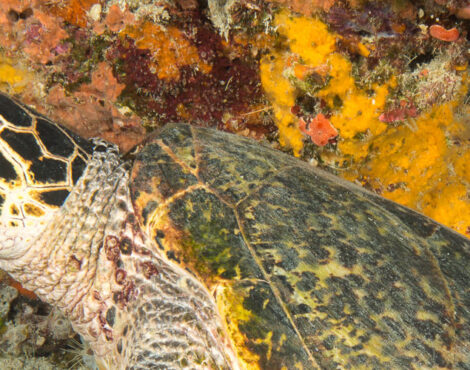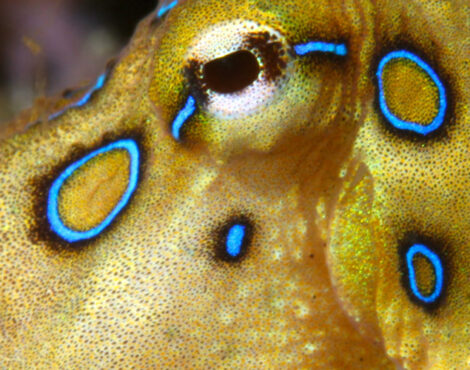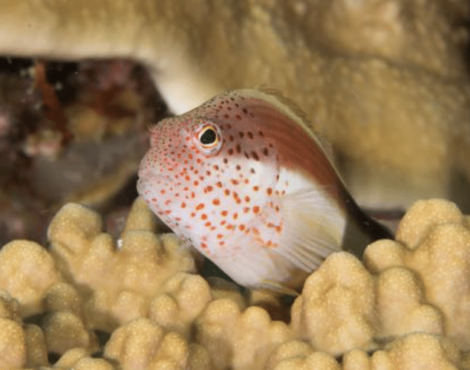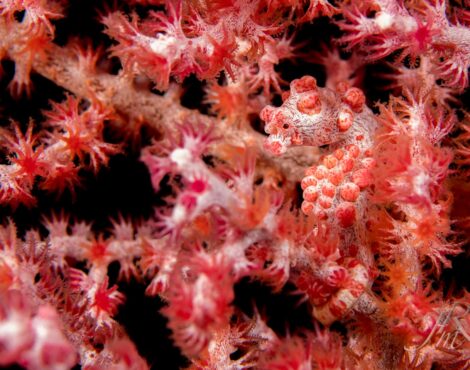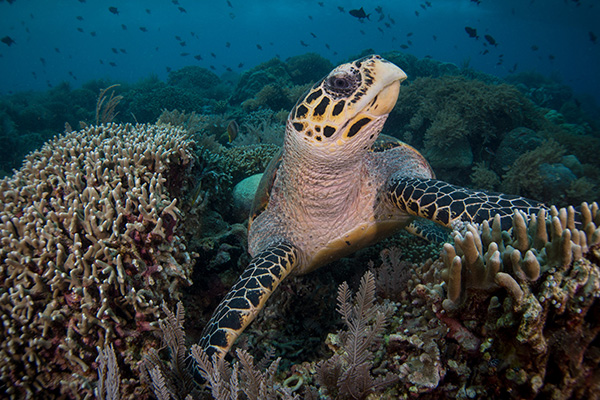
Bunaken Marine Park is most well known for its abundance of macro life. But aside from the tiny critters photographers love so much, we also have an unusually high number of turtles living here.
It is not uncommon to spot as many as 20 turtles during a single dive on one of the walls surrounding Bunaken, and snorkellers might see even more as they come up to breathe.
The most commonly encountered species is the green turtles, but that is only one of a handful of species that live here. Loggerheads are also occasionally spotted, and leatherbacks are known to cruise through the deep channels between the islands.
The second most common species we see is the instantly recognisable hawksbill turtle. These reptiles are critically endangered, so we couldnât be happier about having a healthy population right on our doorstep.
What does a hawksbill turtle look like?
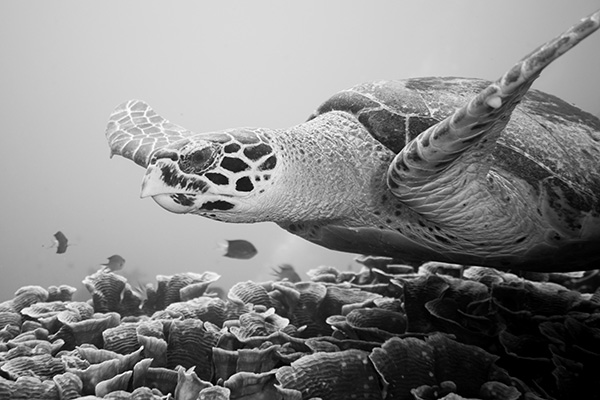
The hawksbill turtle (Eretmochelys imbricata) is the smallest turtle species living within Bunaken Marine Park. A fully grown adult is roughly one metre in length, and up to 80 kg.
They are the most recognisable species because of the distinctive shape of their beakâ which as the name implies, looks similar to a hawks beak. The shells can range from light green to brown in colour, and sometimes has barnacles or algae attached. The carapace (top shell) usually has serrated edges, and the plates (scutes) are overlapping.
What does a hawksbill turtle eat?
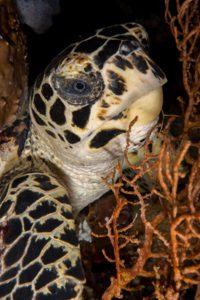
Hawksbill turtles are omnivores and eat a varied diet, but their main food source is sponge â which makes up roughly 90% of their diet. They use their powerful beaks to break and shred the sponge.
Unlike other spongivores, hawksbill turtles only feed of certain species of sponge, ignoring the rest. Many species of which are highly toxic when eaten by other organisms, however, the turtle seems to be highly resilient to the poison.
Upon eating a toxic sponge, the fat running through the animal absorbs the toxins without making it sick, however, the meat of the turtle could still be poisonous if eaten. This is one of the reasons that hawksbill turtles are not commonly poached for their meat.
Although sponges are the main component of their diet, they also feed on seagrass, urchins, barnacles, algae, anemones, and cnidarians/jellies. They are known to prey of dangerous hydrozoans, such as the Portuguese man oâ war. Even this powerful stinging organism cannot penetrate the tough armour of the turtle â although they must close their eyes for protection from the venomous whips.
Life cycle of a hawksbill turtle
As with other turtles, hawksbills live a mostly solitary life â although they are tolerant of other individuals living around them.
Every two to three years, the female will return to the area of her nesting beach (known as natal beach) and find a mate. Once she has mated, she will drag herself up the beach and dig a hole, laying up to 140 eggs before covering them up and dragging herself back out to sea.
During a nesting season, she can lay up to six clutches of eggs, and she can mate with another male and store his sperm while still producing a batch of eggs from a previous mate.
The incubation time for the eggs is roughly 60 days, and the turtles would usually hatch on a clear, bright night so they can easily find their way into the sea. Because they naturally follow the light to find their way to the sea, they often get led astray by artificial lighting from towns and cities. Even on Siladen, we must cut the lights near the dive centre when they hatch so they go the right way.
The hatchlings are tiny (around 5cm total length) and are very vulnerable. They are also very poor divers at this stage in their lives, and their shells are soft. To avoid predation from sea birds, they will live around floating masses of sea plants and algal mats for protection from above.
They live in open water until they reach around 30-40 cm in length, before moving onto a reef. They reach maturity after an estimated 25 years, although this varies depending on the region. Hawksbills living in the Caribbean mature and mate at an earlier age than the individuals living in the Indo-Pacific.
As a juvenile, they are very open to predation, however, as an adult, only sharks, saltwater crocodiles, some larger pelagic species, and octopus can break through their tough exterior to get to the meat inside.
Diving with hawksbill turtles
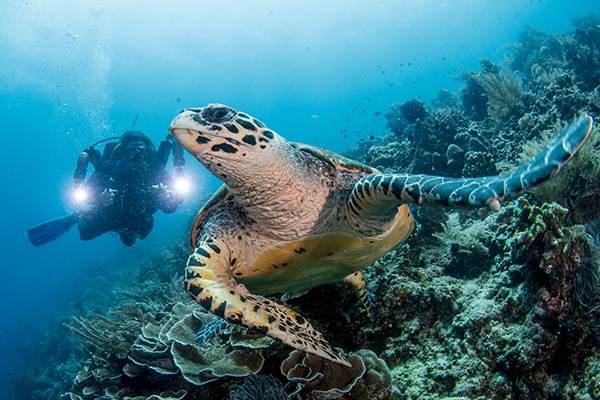
We are lucky to have so many turtles throughout Bunaken Marine Park. Hawksbill turtles make up roughly one in ten of our turtle sightings, and they are more common at some dive sites than at others. Most of our turtle encounters are around Bunaken island, although they are occasionally spotted around Siladen and Manado Tua too.
Out of all the turtles living throughout the region, the hawksbills are the most relaxed around divers. They really donât seem to care about you being there, which makes them great photography and videography subjects. They make especially interesting subjects for video because they tend to ignore divers completely while feeding â meaning you can get close for some interesting behavioural footage.
Like anything else, be on the lookout for signs of stress while you are spending some time with them, and if they decide to swim away, please donât follow them.
Hawksbill turtle conservation
Since 1970, hawksbill turtles have been listed as endangered, and they are currently internationally listed as critically endangered.
They have historically faced poaching for their beautiful shell, which is used to make ornaments, jewellery, and glasses frames. Although the trade of their shells is internationally illegal, it still continues in some parts of the world.
Their biggest threat is from habitat destruction. As coral reefs continue to decline worldwide, their primary food source is threatened â forcing them to spend more time in open waters looking for food. Their nesting beaches are also at threat from coastal development, and bright lights being set up in popular beach resort towns are interfering with the hatchlings sense of direction.
Hawksbill turtles seem to be the most common nesting species on Siladen, which is a very good sign that the population continues to be healthy throughout Bunaken Marine Park and the wider region.


